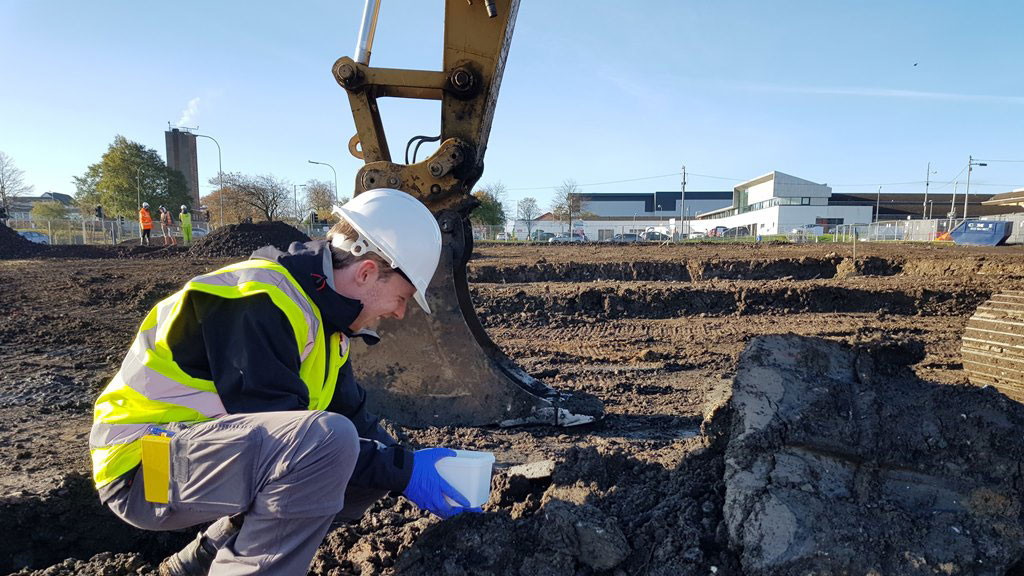- P.O Box 4, Uxbridge Mass 01569
- (508) 779-7300
- [email protected]
- Home
- / Environmental Services
Environmental Services
Our environmental services cover site assessments, waste management, and pollution prevention—ensuring regulatory compliance and fostering healthier, sustainable environments for communities and businesses.

Brownfield Redevelopment
Mass Environmental has a great deal of experience helping all parties involved in turning brownfields into profitable assets, including municipalities, developers, property owners, and lawyers. We manage every stage of the environmental redevelopment process, including performing preliminary due diligence and accurately characterizing the site; coordinating with the relevant state agency to negotiate a possible “no further action” status; creating a remedial action plan if necessary; and, lastly, obtaining the certificate of completion and all related liability protections. With each brownfield project, Mass Environmental aims to minimize any potential liabilities while optimizing the possible return for our customers.
Characterization of Soil, Groundwater
For more than 25 years, the characterization of soil, soil vapor, and groundwater has been the cornerstone of Mass Enivronmental’s environmental practice. Mass Environmental has developed a reputation for outstanding site investigation and assessment activity by providing innovative, cost-effective, and regulatory-accepted strategies tailored to our client’s business needs.

We provide clients with a single point of contact to avoid delays or confusion. At the same time, behind the scenes, a talented and dedicated team of geologists, hydrogeologists, engineers, chemists, and health professionals is available as needed to achieve the client’s objectives. Our firm also provides a comprehensive range of services dealing with the characterization and assessment of contaminants in bedrock, surface water, indoor air, and ambient air.
Due Diligence / Phase 1 ESA
Phase I Environmental Site Assessments (ESAs) are conducted for commercial and real estate transactions to identify any potential or existing environmental contamination at a location. Mass Environmental conducts Phase 1 ESAs in accordance with the US Environmental Protection Agency’s (USEPA) Standards and Practices for All Appropriate Inquiries (40 CFR 312) and the American Society for Testing and Materials (ASTM) Standard Practice for Environmental Site Assessments: Phase 1 Environmental Site Assessment Process (ASTM Designation E1527-13).
The Phase 1 ESA is intended to offer landowner liability protections in compliance with the Comprehensive Environmental Response, Compensation, and Liability Act (CERCLA). The goals of the Phase 1 ESA are to assess a property’s environmental status and identify recognized environmental conditions (RECs), as specified by ASTM.
Site reconnaissance, regulatory and historical record reviews, interviews, client-provided information reviews, and report preparation are the primary elements of a Phase 1 ESA. Mass Environmental takes great satisfaction in conducting Phase 1 ESAs with skill and thoroughness. The professionals at Mass Environmental have more than 30 years of expertise conducting Phase 1 ESAs at commercial, residential, industrial, and municipal properties across the United States for both the public and private sectors.
Per- and Polyfluoroalkyl Substances (PFAS)
PFAS are a group of fluorinated organic chemicals that have been used since the 1950s to make consumer products and materials that are resistant to water, grease, and stains (e.g., non-stick cookware, textiles, and paper food packaging). PFAS are also used in some firefighting foams and in some industrial processes. Perfluorooctanoic acid (PFOA) and perfluorooctane sulfonate (PFOS) have been the most extensively produced and studied of these chemicals.
Drinking water can be a significant exposure source in communities with PFAS-contaminated water supplies. Contamination of drinking water is typically localized and associated with an industrial facility where the chemicals were produced or used or where firefighting foam was used. Contamination of drinking water may also be associated with municipal waste and land application of certain waste (e.g., industrial compost facilities).
The US Environmental Protection Agency (EPA) has issued MCLs for PFOA and PFOS of 0.004 ng/L. EPA has also issued MCLs for PFHxS, PFNA, and hexafluoropropylene oxide dimer acid and its ammonium salt (referred to as “GenX chemicals”) of 10 ng/L. MassDEP is currently evaluating these new drinking water values and will update the Massachusetts MCL to comply with EPA’s MCLs.
Can PFAS Cause Cancer?
The EPA has concluded that PFOA and PFOS are likely to be carcinogenic in humans. Studies in humans suggest that PFOA may increase the risk of kidney and testicular cancer and that PFOS may increase the risk of liver cancer. The risk of cancer for an individual depends on many factors, including the amount and duration of exposure and the underlying health status of the individual.
FAQ’s
The term Environmental Services (EVS) refers to a range of endeavors and sectors of the economy that are centered on safeguarding, conserving, and improving the environment while encouraging resource management and sustainable growth. These services seek to guarantee regulatory compliance, lessen the negative environmental effects of human activity, and advance the general well-being of human communities and ecosystems.
Environmental Consulting: It is the provision of professional guidance and assistance to help governments, corporations, and organizations comply with environmental rules, evaluate possible hazards, and create sustainability and environmental management plans.
Detection: Using air quality management, wastewater treatment, and emissions monitoring to identify, track, and manage pollution sources, including soil, water, and air pollutants.
Waste Management: Waste management involves the collection, transportation, processing, recycling, and disposal of solid, liquid, and hazardous wastes to decrease waste production, optimize resource recovery, and guarantee ecologically trustworthy disposal.
Remediation and Restoration: Remediation and restoration concerns about clearing contaminated sites and restoring damaged ecosystems to conserve biodiversity, improve ecological health, and promote safe reconstruction.
Environmental Monitoring and Assessment: This includes animal and habitat evaluations as well as air, water, and soil quality monitoring. It involves gathering and analyzing environmental data to assess ecosystem health, monitor changes, and detect possible hazards or consequences.
Regulatory Compliance and Permitting: Instructions for negotiating environmental laws, obtaining required licenses, and guaranteeing continued adherence to the law.
Our Services
Compliance Made Simple with Professional Inspections
Effortless compliance through expert inspections, ensuring safety and regulatory adherence.
